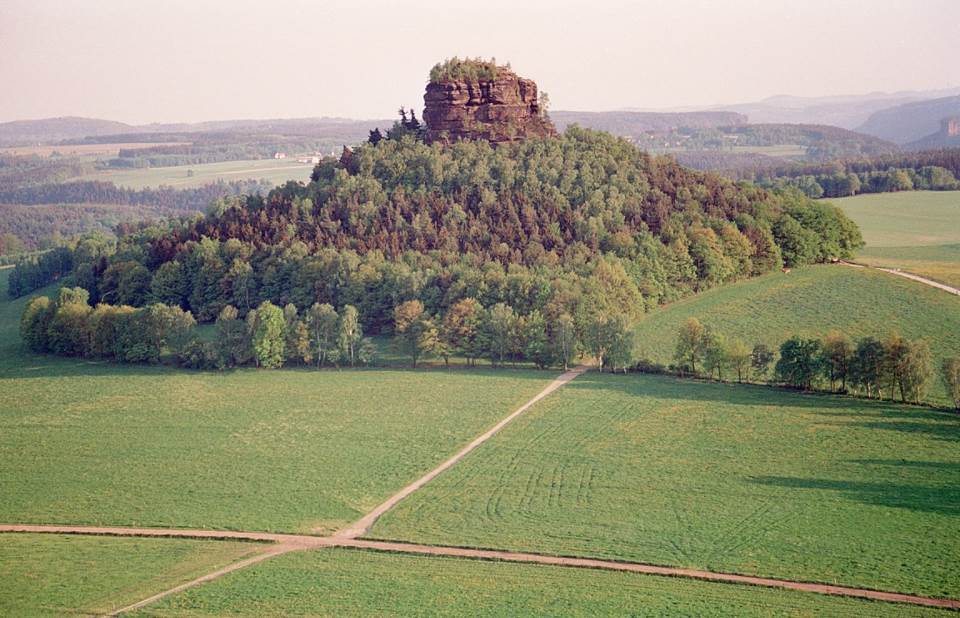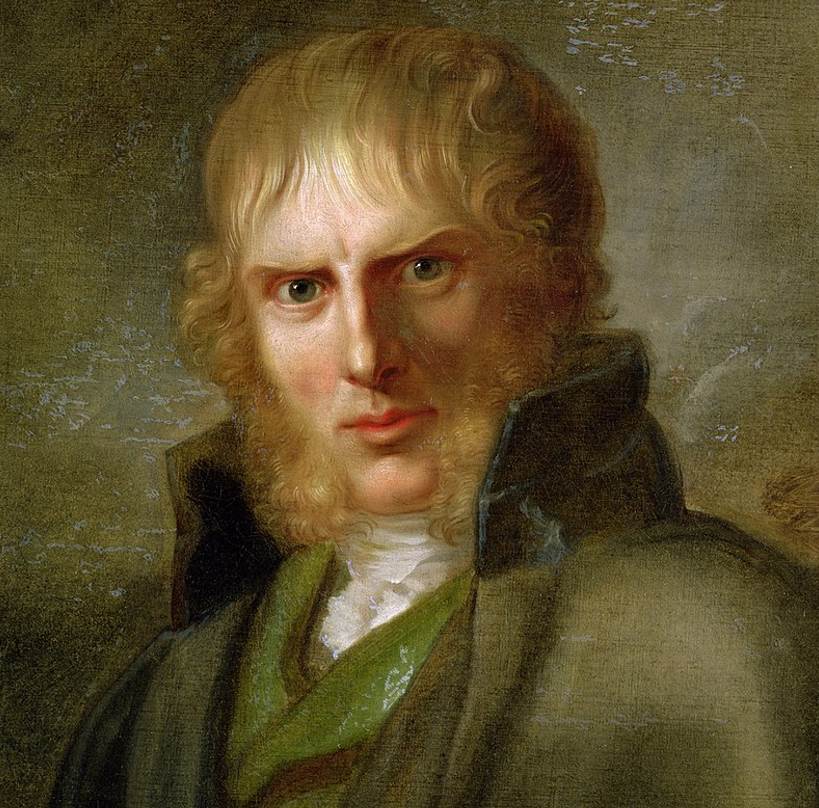If we have to pick one painting that defines the Romantic art movement, then this Romantic painting would be it.
Romantic artists in the first decade of the 19th century put a high emphasis on individuality and conveying personal emotion. This painting by one of the most famous German artists in history embodies this perfectly.
Let’s take a closer look at some of the most interesting facts about Wanderer above the Sea Fog by Caspar David Friedrich, a masterpiece by the artist for several reasons.
1. It was painted in the second decade of the 19th century
Wanderer above the Sea Fog is the most famous painting in the oeuvre of Caspar David Friedrich (1774-1840), the leading German artist of his time. He was born a year earlier than J.M.W. Turner (1775-1841), the English painter who specialized in landscapes and maritime paintings.
The fascinating fact about this notion is that both artists elevated landscape painting into the new Romantic era around the same time. It took a bit longer for Friedrich to reach the same level of recognition as he only received his first major commissions around 1808, shortly settling in Dresden.
He completed this painting in 1818, the same year that he got married and at a time when his career was taking off.

2. It depicts a man standing on top of a mountain peak
The German name of the painting is “Der Wanderer über dem Nebelmeer” and it’s also known in English as “Wanderer above the Mist or “Mountaineer in a Misty Landscape.”
These titles pretty much explain what is depicted. We can see a mountaineer who is facing the viewer with his back while contemplating the scenery.
Mountain peaks are sticking out of the foggy landscape. Some of the peaks feature trees and a large mountain range can be seen emerging in the top left corner. The fog stretches out indefinitely and eventually merges with the horizon in the top right corner.
3. The painting embodies the spirit of the Romantic art movement
Wanderer above the Sea Fog is not just considered to be a masterpiece in its own right, but also the most famous painting representing the Romantic movement. That’s mainly because it embodies what the movement was about.
Romanticism was a reaction to the Industrial Revolution and the rationality of the Age of Enlightenment. It forced people to look inside themselves and see raw emotions.
In that sense, this painting is considered to be the epitome of self-reflection. You have to imagine what the depicted man thinks because we can’t see his face, only the fact that he is gazing upon this hazy landscape.
This forces you to somehow step into his shoes to feel what he might be feeling.

4. Some depicted mountains can be recognized
Friedrich moved to Dresden in the year 1798 after completing his studies at the prestigious Academy of Copenhagen. This is a major city in the eastern part of Germany, not too far from the modern-day border with the Czech Republic.
The painting depicts distinctive peaks in the Elbe Sandstone Mountains, a mountain range that straddles the border of both countries. This range is situated in both the German state of Saxony and the Czech region of North Bohemia and not too far southeast of Dresden.
Friedrich used several mountain peaks and rearranged them to fit into the overall composition. These are:
- The Zirkelstein is in the top right corner.
- Either the Rosenberg or the Kaltenberg is in the top left corner.
- In the foreground, we can see a group of mountains called the Gamrig near the town of Rathen.
- The mountain on which the man stands is a group of mountains called the Kaiserkrone.

5. The painting had a positive influence on mountaineering
Mountaineering as we know it today was still in its infancy at the time that Friedrich completed this defining painting in the history of art.
We can see the man majestically standing on top of the mountain peak. This image wasn’t just important in the development of the Romantic art movement but also in the history of mountaineering.
It conveys a sense of power that comes along with conquering a mountain. It has been described as “an archetypical image of the mountain-climbing visionary.”
It was the start of associating climbing a mountain with something that should be admired, a notion that didn’t exist before.
6. Caspar David Friedrich made a famous comment about this painting
Caspar David Friedrich commented on his masterpiece by saying the following:
The artist should paint not only what he has in front of him but also what he sees inside himself.
This defines Romanticism and led the way for Romantic artists to paint works that aimed to move people rather than solely depict what is there.
This eventually fell out of favor with the rise of Realism artists halfway through the 19th century. Although Friedrich’s works were devalued because of this and he died in obscurity, his works inspired many artists of future generations, including Surrealists and Expressionists.

7. How big is Wanderer above the Sea Fog by Caspar David Friedrich?
Over 2 dozen of books have been published featuring Wanderer above the Sea Fog on their covers. These books were written in a wide variety of genres, ranging from Romantic novels to horror stories.
The popularity of the painting is associated with the sense of emotion that it conveys which can be pretty much everything. This doesn’t mean, however, it was painted at a monumental scale.
The oil on canvas painting has dimensions of 94.8 × 74.8 centimeters (37.3 × 29.4 inches).
8. Where is the painting located today?
The painting is one of the main attractions of the Hamburger Kunsthalle, a large art museum in the German city of Hamburg in the northern part of the country.
The museum in Hamburg consists of 3 interconnected buildings in the historic heart of the city that were built at different times in history.
These are the main building (1869), the Kuppelsaal (1921), and the Galerie der Gegenwart (1997).
Friedrich’s work can be found in a gallery dedicated to artists of the 19th century and also houses another one of his famous works called “The Sea of Ice” (1824).

